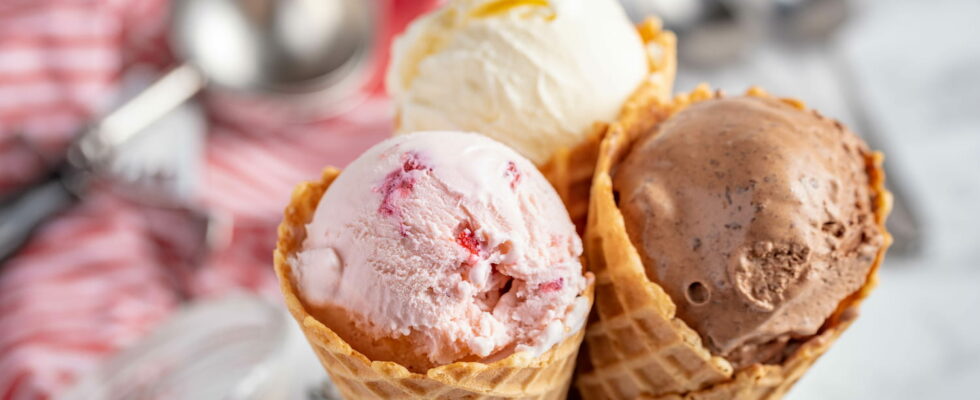The term “artisanal ice cream” does not necessarily mean that you are dealing with a real ice cream maker. These three clues do not lie.
The French are crazy about ice cream, since we know that it is the favorite dessert of the summer and that nearly 84% of French households say they eat ice cream, France having become the number 1 European producer ahead of the Italians. But how do you make the right choice among the myriad of ice cream parlors on every street corner, which offer so-called “artisanal” or “homemade” ice creams in their windows? We reveal 3 tips to avoid choosing the wrong ice cream parlor.
To identify a good ice cream, your sense of sight will be very useful. First, be wary of colors that are too bright or even fluorescent. The best clue is to examine the pistachio flavor bin at your ice cream parlor: a real pistachio ice cream will not be fluorescent green but rather hazelnut-colored, just as a vanilla-flavored ice cream will not be yellow but cream-colored. The presence of a turquoise Smurf ice cream is a very bad sign and these are the ice cream parlors that often offer an astronomical quantity of flavors with fanciful names!
Second clue, the ice cream should not appear “swollen”, overflowing from its container without melting. If this is the case, it was certainly made with a premix, a ready-made base of milk powder, emulsifiers and vegetable fats to which water or milk was simply added, then flavored paste, before being churned. An easy and less expensive option in the manufacturing process that allows the ice cream to be kept at warmer temperatures. “A good ice cream, if it overflows from the container, it melts”, assured Bruno Aïm, president of the National Confederation of Glaciers of France (CNGF), to BFM TV.

Finally, the last clue, less obvious to spot, is the logo “Glaces et sorbets de tradition française” which can be displayed on the window of your ice cream maker. If this is the case, you have come to the right place, your ice cream maker has been approved by the “Quality Charter” of the CNGF which distinguishes professionals who select the best ingredients and who make ice creams according to the rules of the art, with certified safety and hygienic quality. Be careful not to confuse it with the terms “Artisan glacier” or “Maître glacier” which do not entail any obligation to respect specific specifications.
The price of a scoop of ice cream, which is generally around 3 euros, is in no way a guarantee of reliability, especially since if your ice cream parlor is in a very touristy place, we will understand that it is obliged to inflate the prices a little to pay the rent, or conversely, that it lowers the prices to attract customers in the face of competition. Now you know everything you need to know to avoid making a mistake. We are counting on your sense of observation this summer!
